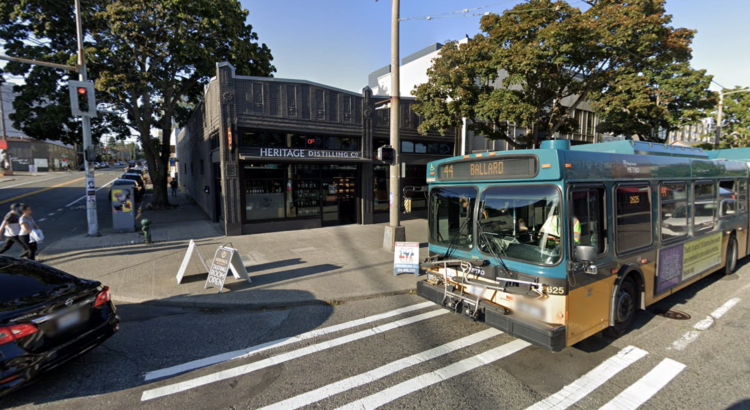With reduced ridership and lost revenue due to COVID-19, King County Metro is planning significant cutbacks to transit services this fall.
While some routes will be restored on Monday, June 22, the longterm service reductions will take effect in September.
“September’s reductions to transit service are unfortunate but necessary due to economic realities,” Metro writes on their Metro Matters blog. The projected estimated sales tax loss totals $280 million for 2020.
“The latest financial forecast reflects the dire economic repercussions Metro faces due to the COVID-19 crisis. The unfortunate result are reductions not only to service, but also to our workforce. Metro is exploring the nature and timeline of reductions needed in the coming weeks and months,” Metro writes.
The upcoming cuts have been designed to reduce the impact to priority populations, Metro says, “aiming to maintain service in areas where social needs are greatest.”
Planned service cuts and revisions in September will be at about 85 percent of pre-COVID-19 levels, with about 11,000 weekday trips on 122 routes. Some weekday peak-period commuter routes will be restored, but many peak routes will remain suspended as Metro expects that the long-term commuter ridership demand will take time to recover, with many large employers in the region allowing employees to work from home.
Here’s a list of the changes planned for September (from Metro Matters blog post):
Routes operating at full service levels (53 routes, primarily all-day routes operating at pre-COVID-19 levels.)
- RapidRide A, B and F lines, 21X, 24, 101, 107, 111, 128, 131, 132, 153, 156, 182, 187, 193, 224, 230, 231, 239, 257, 303, 304, 309, 311, 330, 346, 347, 348, 631 (Burien Community Shuttle), 635 (Des Moines Community Shuttle), 773, 775, 901, 903, 907, 930
- Routes operating at full service levels that were restructured through the Renton, Kent, and Auburn Area Mobility Plan: Routes 102, 105, 148, 150, 160 (new), 161 (new), 162 (new), 165 (new), 168, 181, 183, 184 (new), 906, 914, 915, 917
Routes operating with reduced service levels (69 routes), including long-term reductions due to the loss of Seattle Transportation Benefit District (STBD) funding:
- RapidRide C, D and E lines, 1, 2, 3, 4, 5, 7, 8, 10, 11, 12, 13, 14, 21, 26, 27, 28, 31, 32, 33, 36, 40, 41, 43, 44, 45, 48, 49, 50, 55, 56, 57, 60, 62, 64, 65, 67, 70, 73, 74, 75, 106, 118, 119, 120, 124, 125, 204, 208, 212, 218, 221, 225, 226, 240, 241, 245, 250, 255, 269, 271, 301, 331, 345, 372, 373
Routes suspended/not operating (51 routes):
- 5X, 9, 15, 17, 18, 19, 22, 29, 37, 47, 63, 71, 76, 77, 78, 113, 114, 116, 118X, 119X, 121, 122, 123, 143, 154, 157, 167, 177, 178, 179, 190, 197, 200, 214, 216, 217, 219, 232, 237, 246, 249, 252, 268, 308, 312, 316, 342, 355, 628 (Snoqualmie Community Shuttle), 630 (Mercer Island Community Shuttle), 931
Routes deleted (13 routes):
- Renton-Kent-Auburn Area Mobility Plan: 158, 159, 164, 166, 169, 180, 186, 192, 908, 910, 913, 916, 952, under an approved restructure plan
Routes that aren’t listed above are still in discussion as Metro’s revenue and ridership projections evolve.
Metro is still finalizing details for their June 22nd ramp-up in service; we’ll update with that information when it becomes available.



For years they have been telling us that they lose more money the more riders they get. They repeat this over and over again in an effort to get a budget increase. Which of course should throw up a bunch of red flags. If getting more customers means losing more money, clearly something is wrong.
Yet today we hear that; as ridership goes down their losses go up…? Amazing.
The way I see it there are only three possibilities; 1. they lied about losing more money the more customers they get. 2. they lied about losing more money the fewer customers they get. 3. they are so bad at their jobs that they really do lose more money no matter what happens.
Is there any other possibility?
smart guy, the get money from the feds relative to ridership. without the feds, nada
Passengers don’t cost Metro money directly. Running buses is what costs money. Passengers offset part of this cost through paying fares. Buses are rarely (if ever) full enough for the fares to cover the whole cost. The reason more riders tends to cost more money is that you often need to run more buses to serve all of the riders. Again, buses are the cost.
Conversely, if you keep the number of buses the same and lose a bunch of passengers that’s worse for the budget than if the buses were full. Costs are the same but revenue is down.
Finally, the difference between fares and the cost of running the buses is paid through taxes. Tax revenue is taking a big hit. Less revenue from fares and less revenue from taxes means they can’t afford to run as many buses.
That is option number 1. They lied about losing more money the more customers they get.
How wonderful to find a thoughtful and informative response on Ballard Blog. I had quit reading them because of the negative and uninformed comments. Thanks for your response.
Thanks so much for the rare educated and informed comment.
You’re misinterpreting the situation.
The vast majority of lost money is from reduced sales tax revenue, not from reduced fare revenue.
Emperor Inslee NEVER lies.
No! Not the 15! That’s my bus to work. :(
I feel the same about “The Farty.” And of course I take the first one that rolls out at O’Dark Thirty and you know they’re gonna cut that one. Hopefully I will be allowed to work from home for a good long time.
I know what you mean. The #17 was minimal anyway (South in the early morning and North in the evening) which is why fewer people were riding. Now it is gone completely . There is no longer any service in Sunset Hill which is especially difficult for the disabled. That would be me.
Awe, too bad. Besides, working is SO over-rated. Just go protest something, and feel better about yourself.
The 17 is my bus :( I hope when things are back to normal this route can return…
Seems the more YOUR hand picked politicians do FOR you, the more they do TO you. Perhaps this tidy snapshot of life will wake a few more up. Metro waited until they could wait no longer. This is the very same way your kids schools operate when it comes to food. The more they get into their food hammock, the more federal $$ comes in. Being a victim pays. Being a puppet is what they want.
Huffing paint has turned your brain to mush.